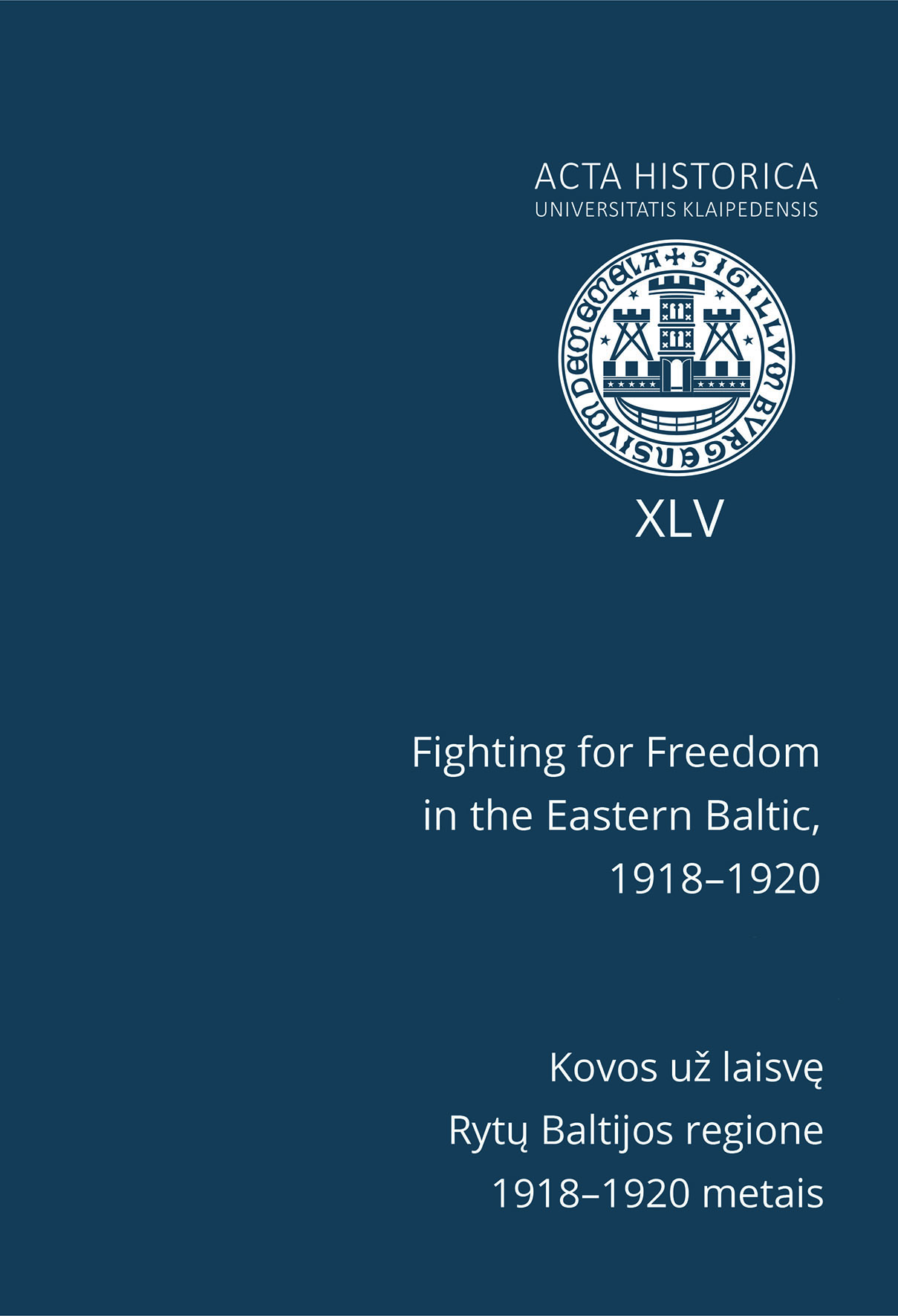Volume 45 (2024): Fighting for Freedom in the Eastern Baltic, 1918–1920 = Kovos už laisvę Rytų Baltijos regione 1918–1920 metais, December 2024

Order by:
Pub. online: 10 Dec 2024
Type: Article
 Open Access
Open Access
Journal:
Acta Historica Universitatis Klaipedensis
Volume 45 (2024): Fighting for Freedom in the Eastern Baltic, 1918–1920 = Kovos už laisvę Rytų Baltijos regione 1918–1920 metais, pp. 239–286
Abstract
Pub. online: 10 Dec 2024
Type: Article
 Open Access
Open Access
Journal:
Acta Historica Universitatis Klaipedensis
Volume 45 (2024): Fighting for Freedom in the Eastern Baltic, 1918–1920 = Kovos už laisvę Rytų Baltijos regione 1918–1920 metais, pp. 289–305
Abstract
Pub. online: 10 Dec 2024
Type: Article
 Open Access
Open Access
Journal:
Acta Historica Universitatis Klaipedensis
Volume 45 (2024): Fighting for Freedom in the Eastern Baltic, 1918–1920 = Kovos už laisvę Rytų Baltijos regione 1918–1920 metais, pp. 307–319
Abstract
Pub. online: 10 Dec 2024
Type: Article
 Open Access
Open Access
Journal:
Acta Historica Universitatis Klaipedensis
Volume 45 (2024): Fighting for Freedom in the Eastern Baltic, 1918–1920 = Kovos už laisvę Rytų Baltijos regione 1918–1920 metais, pp. 321–350
Abstract
Pub. online: 10 Dec 2024
Type: Book Review
 Open Access
Open Access
Journal:
Acta Historica Universitatis Klaipedensis
Volume 45 (2024): Fighting for Freedom in the Eastern Baltic, 1918–1920 = Kovos už laisvę Rytų Baltijos regione 1918–1920 metais, pp. 353–359
Pub. online: 10 Dec 2024
Type: Book Review
 Open Access
Open Access
Journal:
Acta Historica Universitatis Klaipedensis
Volume 45 (2024): Fighting for Freedom in the Eastern Baltic, 1918–1920 = Kovos už laisvę Rytų Baltijos regione 1918–1920 metais, pp. 361–363
Pub. online: 10 Dec 2024
Type: Book Review
 Open Access
Open Access
Journal:
Acta Historica Universitatis Klaipedensis
Volume 45 (2024): Fighting for Freedom in the Eastern Baltic, 1918–1920 = Kovos už laisvę Rytų Baltijos regione 1918–1920 metais, pp. 365–371